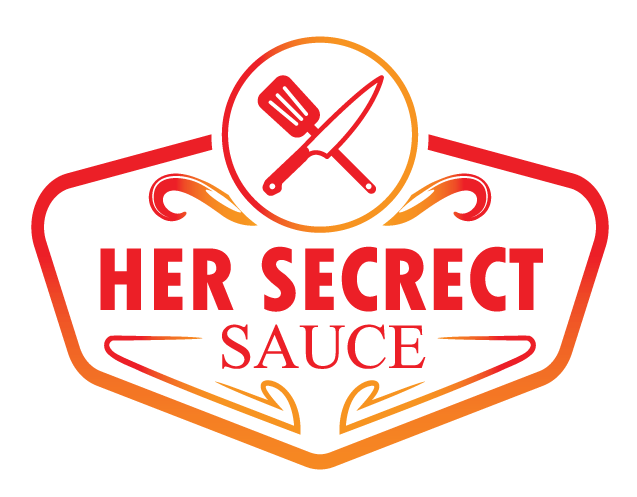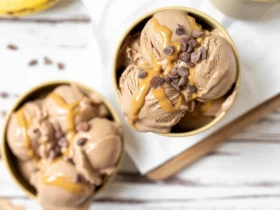Have you ever looked at a cheesecake recipe and just… noped right out of there? All the talk about water baths, springform pans, and the constant threat of a giant crack on top can make you want to just go buy one from the store.
I get it. For years, I thought making a good cheesecake at home was some kind of secret magic only grandmas knew. But I’m here to tell you it’s not. It’s actually pretty simple when you know a few little tricks.
This is the recipe that changed everything for me. It’s my go-to, my never-fails, my “wow, you MADE this?” cheesecake. And you can totally make it too. So let’s do this and make a dessert that’ll make you feel like a rockstar.
What You’ll Need
This list might look a little long, but it’s all pretty basic stuff. No weird, hard-to-find ingredients, I promise.
For the Crust:
- 1 ½ cups of graham cracker crumbs (about 10 full crackers)
- 2 tablespoons of granulated sugar
- 6 tablespoons of unsalted butter, melted
For the Filling:
- 32 ounces of cream cheese, softened to room temp (this is SUPER important)
- 1 ¼ cups of granulated sugar
- 1 teaspoon of pure vanilla extract
- 4 large eggs, at room temp (also very important!)
- 1 cup of sour cream, at room temp
- ¼ cup of heavy cream, at room temp
Tools of the Trade
You don’t need a fancy professional kitchen, but a few key tools will make your life way easier.
- A 9-inch springform pan
- An electric mixer (stand or hand mixer is fine)
- A few mixing bowls
- Measuring cups and spoons
- A spatula
- Heavy-duty aluminum foil
Pro Tips from My Kitchen
I’ve made a LOT of cheesecakes. Some were amazing, and some were… learning experiences. Here are the things that will save you from those “learning experiences.”
- Room Temperature is Not a Suggestion. I’m serious. If your cream cheese, eggs, and sour cream are cold, your filling will be lumpy. Set them on the counter for at least 2-3 hours before you even start. This is the number one rule of cheesecake.
- Don’t Overmix the Eggs. Mix the cream cheese and sugar until it’s smooth, but once you add the eggs, mix on low speed just until they disappear. Overmixing adds too much air, which causes the cheesecake to puff up in the oven and then—BAM—crack as it cools.
- The Water Bath is Your Best Friend. I know it sounds like a pain, but a water bath (or bain-marie if you want to be fancy) is the secret to a creamy, crack-free cheesecake. The steam creates a humid environment, so the cheesecake bakes gently and evenly.
- Don’t Open That Oven! Every time you open the oven door, the temperature drops and you risk a cracked or sunken center. Trust the process. Let it bake without peeking.
- Let It Chill Out. The hardest part of making cheesecake is waiting for it to cool. Let it cool slowly in the turned-off oven, then on the counter, and finally in the fridge for at least 6 hours, but overnight is even better. This slow chill helps prevent cracks and gives it the perfect dense, creamy texture.
Let’s Make a Cheesecake!
Alright, time for the fun part. Just follow these steps and you’ll be golden.
Step 1: Get your oven ready. Move an oven rack to the middle position and preheat to 350°F (175°C).
Step 2: Make the crust. In a small bowl, mix the graham cracker crumbs and sugar. Pour in the melted butter and mix it with a fork until it looks like wet sand.
Step 3: Press the crumbs into the bottom and slightly up the sides of your 9-inch springform pan. Use the bottom of a measuring cup to pack it down tight. Bake for 10 minutes. Then let it cool on a wire rack while you make the filling.
Step 4: Turn your oven down to 325°F (165°C).
Step 5: Start the filling. In a large bowl, use your electric mixer on medium speed to beat the room temperature cream cheese until it’s completely smooth and creamy. Scrape down the sides of the bowl a few times. You don’t want any lumps!
Step 6: Add the sugar and vanilla extract. Beat on medium-low speed until it’s all blended and smooth.
Step 7: Add the eggs one at a time, mixing on low speed after each one just until the yolk disappears. Remember, don’t overdo it here!
Step 8: Mix in the sour cream and heavy cream on low speed until everything is just combined. The batter should be smooth and silky. Pour the filling over your cooled crust.
Step 9: Time for the water bath. Tightly wrap the outside of your springform pan with two layers of heavy-duty aluminum foil. Make sure it goes all the way to the top to keep water out.
Step 10: Place the wrapped pan in a large roasting pan. Pour boiling water into the roasting pan until it comes about halfway up the sides of the cheesecake pan. Be careful not to splash any water into the cheesecake!
Step 11: Carefully put the whole setup into the oven. Bake for about 60-70 minutes. The edges should look set, but the center should still have a slight jiggle to it. It shouldn’t be sloshy, just a little wobbly like Jell-O.
Step 12: Turn the oven off, but DON’T take the cheesecake out. Prop the oven door open with a wooden spoon and let the cheesecake cool in the oven for 1 hour. This is a crucial step for preventing cracks.
Step 13: Take the cheesecake out of the water bath and remove the foil. Let it cool on a wire rack until it’s at room temperature.
Step 14: Cover the cheesecake with plastic wrap and put it in the fridge to chill for at least 6 hours, or preferably overnight. The flavor and texture get so much better after a long chill.
Swaps and Fun Ideas
Once you nail the basic recipe, you can play around with it.
| Component | Substitution Idea | How to Do It |
|---|---|---|
| Crust | Oreo or Biscoff Cookies | Use the same amount of cookie crumbs and butter. You might not need the extra sugar for Oreo crusts. |
| Flavoring | Lemon Zest | Add the zest of one lemon to the cream cheese and sugar mixture for a fresh, zesty flavor. |
| Topping | Chocolate Ganache | Melt 1 cup of semi-sweet chocolate chips with ½ cup of heavy cream. Pour over the chilled cheesecake. |
| Topping | Fresh Berries & Whipped Cream | Just pile them on top before serving. Simple and classic. |
Nutrition Stuff
Let’s be real, this is cheesecake. But here’s a rough idea of the numbers per slice (if you cut it into 12 slices).
| Nutrient | Amount (Approx.) |
|---|---|
| Calories | 450 kcal |
| Fat | 35g |
| Carbohydrates | 28g |
| Sugar | 25g |
| Protein | 8g |
And if you want to make a few tweaks for different diets:
| For This Diet | Try This Swap | Notes |
|---|---|---|
| Gluten-Free | Gluten-Free Graham Crackers | Use your favorite GF brand for the crust. The filling is naturally gluten-free. |
| Lower Fat | Neufchâtel Cheese & Light Sour Cream | Use Neufchâtel cheese instead of full-fat cream cheese and use light sour cream. The texture will be a bit less rich but still good. |
Leftovers and Storage
If you somehow have leftovers, just cover the cheesecake tightly with plastic wrap or put it in an airtight container. It will stay delicious in the fridge for up to 5 days.
You can also freeze it! You can freeze the whole cheesecake or individual slices. Wrap them well in plastic wrap and then foil. It will last in the freezer for about a month. Just thaw it in the fridge overnight before you want to eat it.
FAQs (Questions You Might Have)
Q1. Help! Why did my cheesecake crack?
Ans: This is the most common fear! It usually happens for one of three reasons: the batter was overmixed, it was baked in a dry oven without a water bath, or it cooled down too fast. Follow the tips about mixing and cooling slowly, and the water bath is your best defense.
Q2. My cheesecake seems undercooked and runny in the middle. What went wrong?
Ans: It probably just needed more time in the oven. Ovens can vary a lot. Next time, look for that slight “jiggle” in the center, not a “slosh.” If it’s really soupy, it needed more baking time.
Q3. Can I make this without a springform pan?
Ans: You can, but it’s tricky to get out of the pan. If you have to, use a 9-inch deep-dish pie plate or a regular 9-inch round cake pan. Just be prepared to serve it straight from the dish.
Q4. I forgot to put my ingredients out to get to room temperature. Can I cheat?
Ans: You can try, but be careful. You can unwrap the cream cheese and microwave it in 10-second bursts until it’s soft, but not warm or melted. For eggs, you can put them in a bowl of warm (not hot) water for about 10 minutes.
Wrapping Up
See? That wasn’t so scary. Making a cheesecake from scratch is one of the most satisfying things you can do in the kitchen. It just takes a little patience.
So go for it! Don’t be afraid of the cracks or the jiggles. Just follow the steps, trust the process, and get ready to impress everyone, including yourself.
When you make it, I’d love to hear how it went! Drop a comment below and tell me about your cheesecake masterpiece or ask any questions you have along the way. Happy baking







Leave a Reply